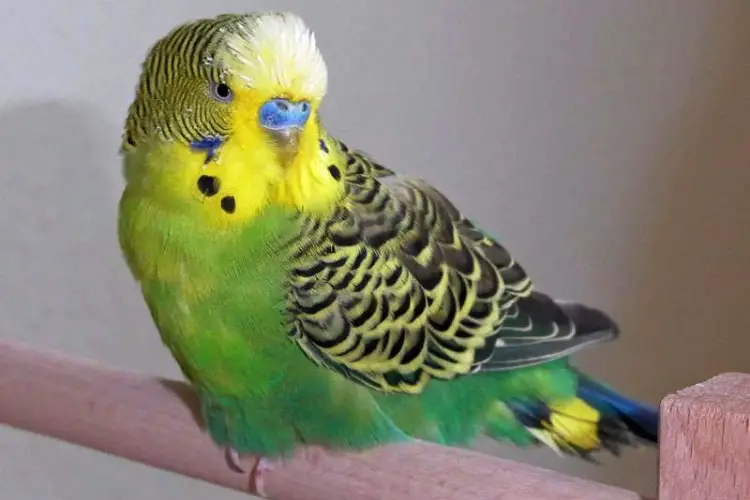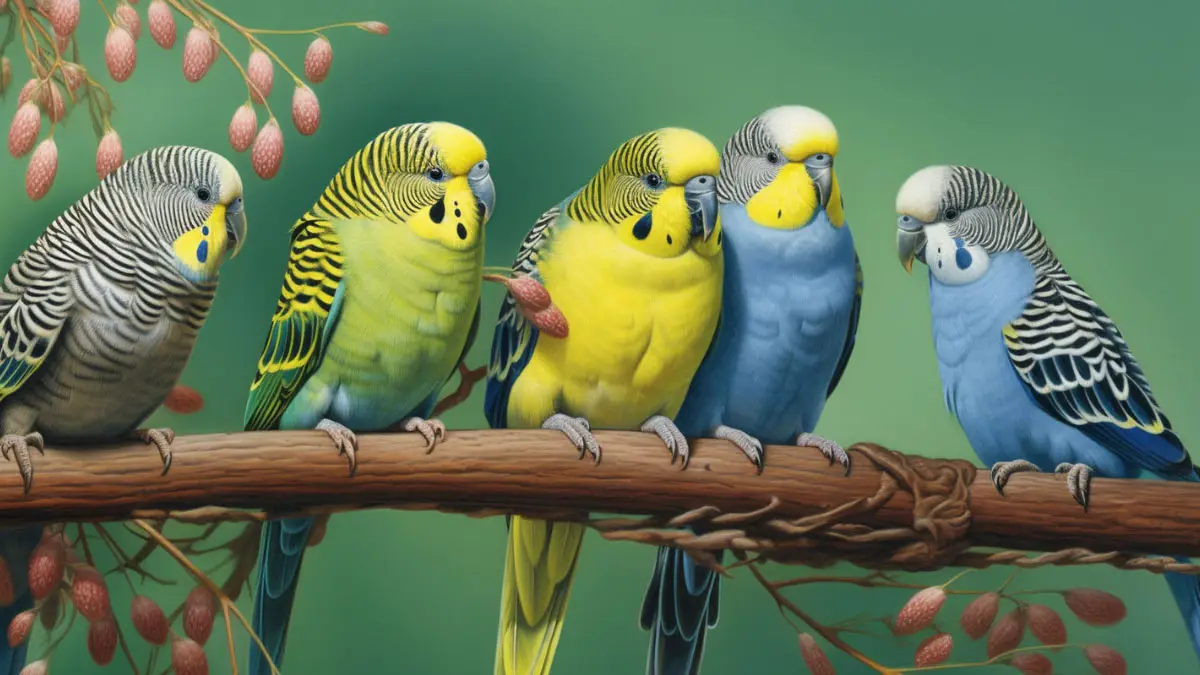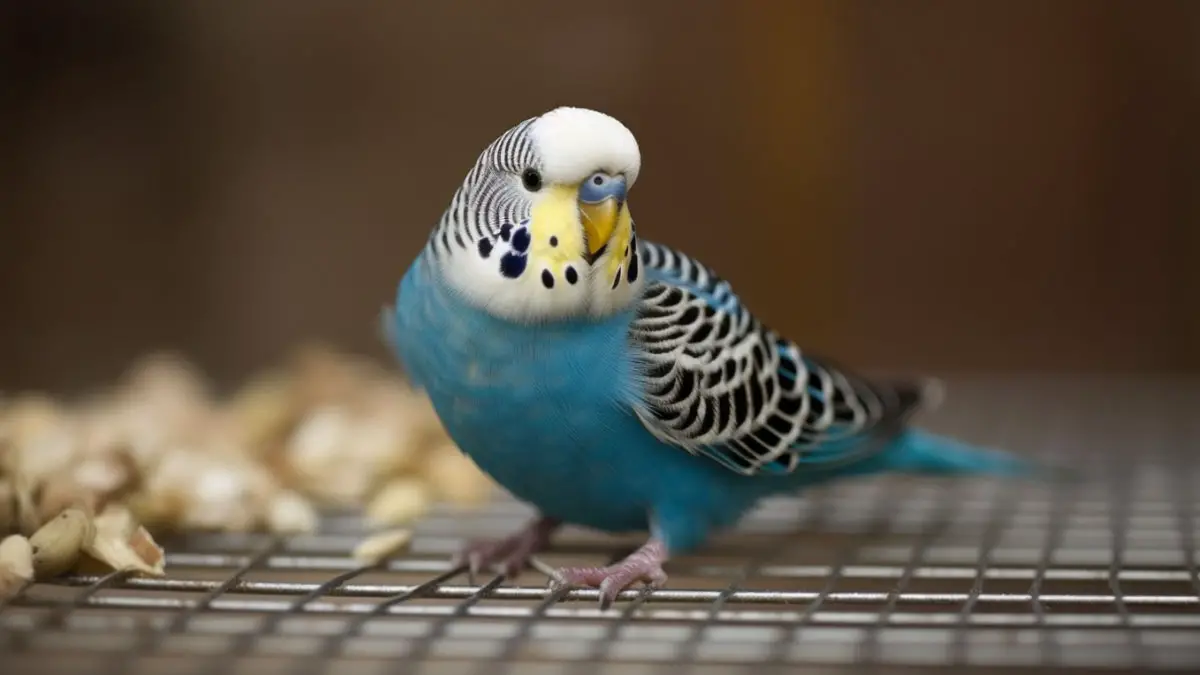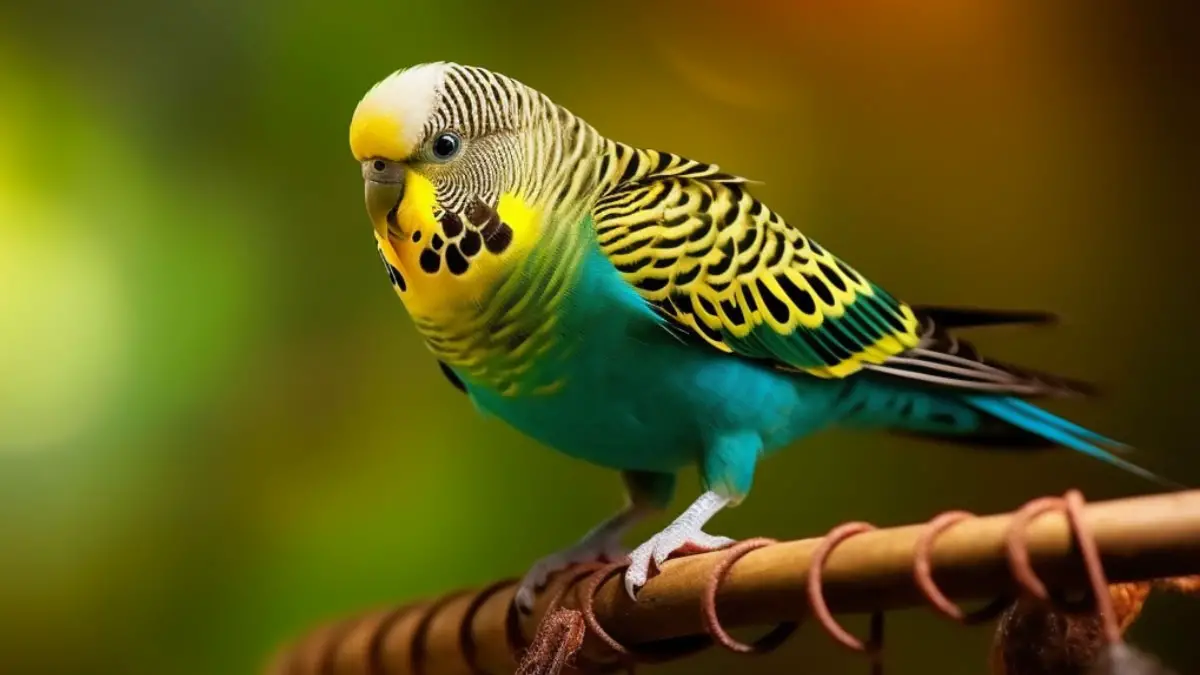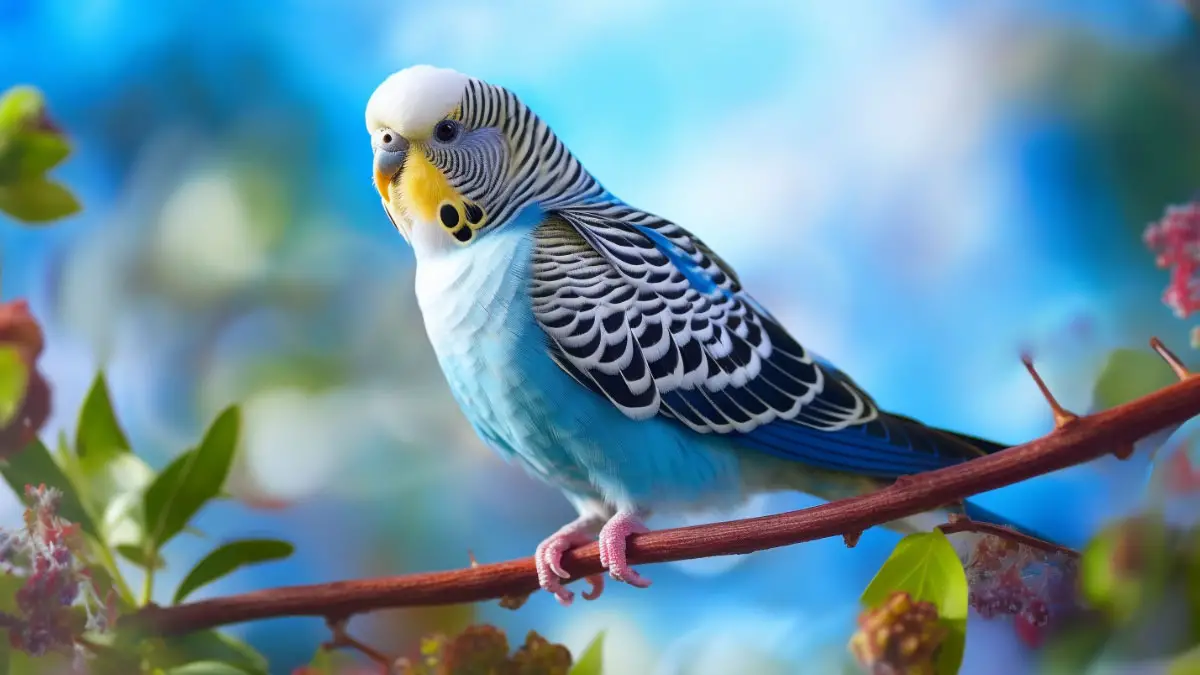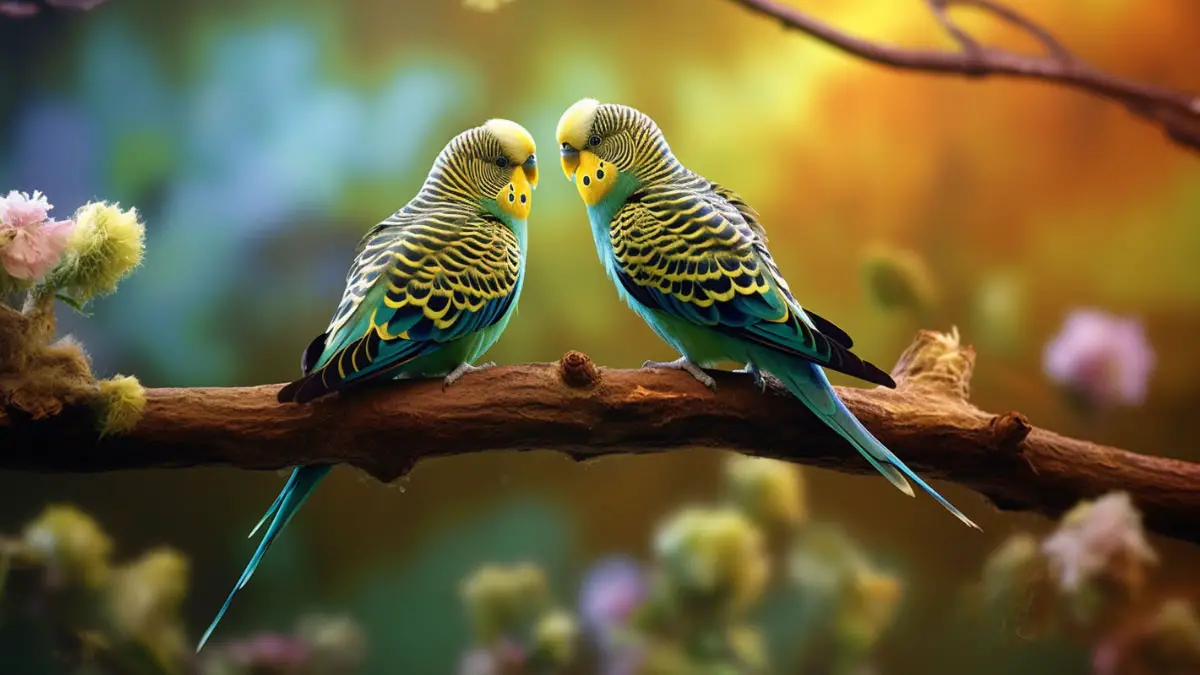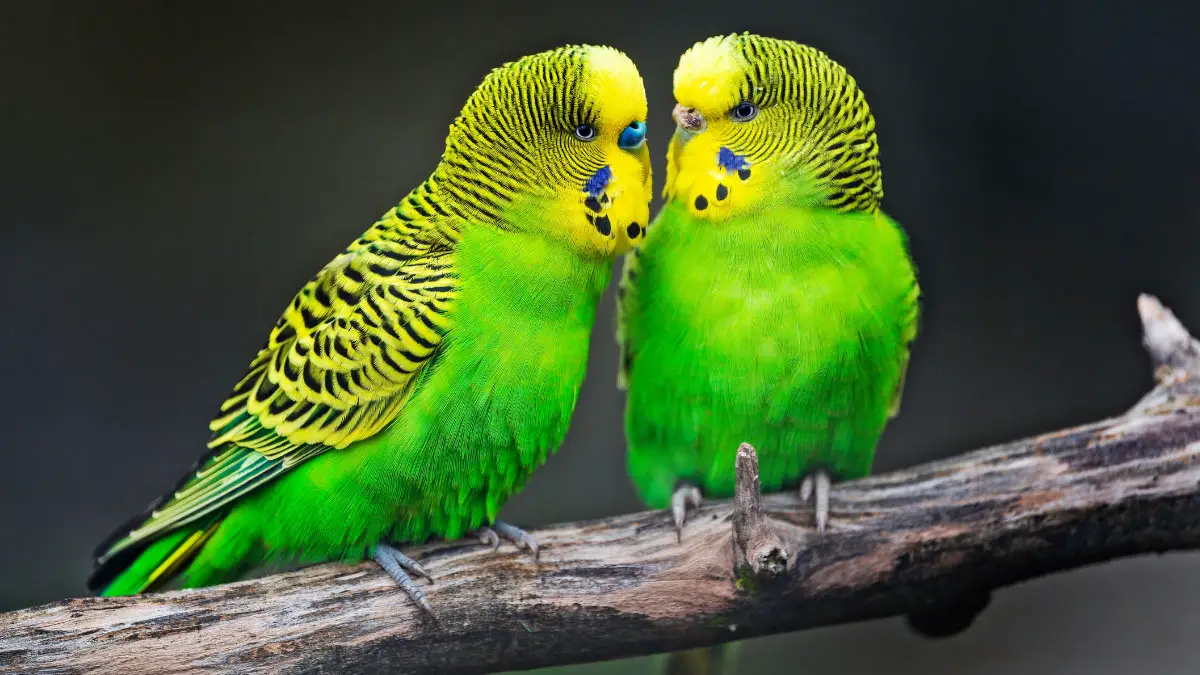Molting is a healthy natural process for all birds, including budgies. Here the old feathers of the budgies gradually drop out and are replaced by a new coat.
How often do budgies molt? Budgies generally molt annually, but some budgies molt more than once a year, with the entire process taking around 2 to 3 weeks to complete. Budgies can molt any time, and there’s no specific season, especially for pet budgies. They become perch-bound in this period since they’re not confident enough to fly. They have increased energy & nutritional demand, and their immune system may also be compromised during molting. So they need some extra care from the owner.
The molting symptoms are typical; loose feathers falling on the cage floor, and the bird looks scruffy. But some molting can be severe, leaving bald patches on the body. Check out the article to know how frequently your budgie should molt and how to help it during this period.
What’s Molting in Budgie?
Molting is a part of the budgie’s annual cycle, which involves the gradual replacement of worn feathers with new ones. It’s a healthy phenomenon in birds and isn’t anything to worry about unless you see an irregular, incomplete, or delayed process. Abnormal molting is possible, where you might see bald patches in your budgie’s body.
Feathers are dead structures like human hairs and are also comprised of the same ingredient called protein keratin. Since damaged feathers can’t repair themselves, they go through a natural process called molting, where they get completely replaced.
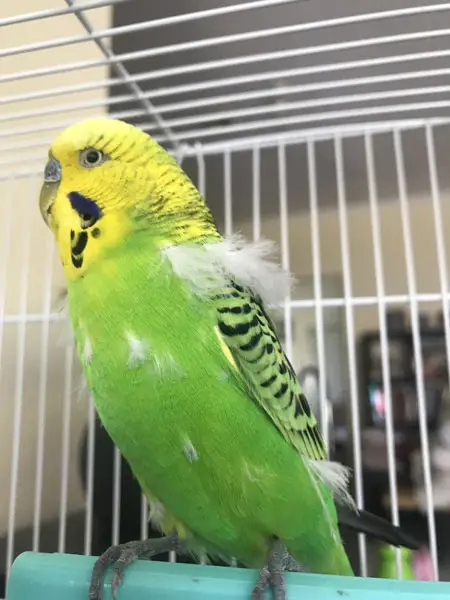
It’s also considered a resting phase for the budgies since their reproductive system gets to rest during this period. The breeding budgies stop laying eggs during molting and build the nutrient reserve. Molting also helps budgies to fly efficiently, regulate body temperature, prevent infections, and promote courtship. You can learn more about molting here.
How Often Do Budgies Molt?
The molting starts in budgies as early as ten weeks. A 10 to 12-week-old baby budgie will go through molting to put on the adult head cap and give up the baby bars. The first molt, in fact, all molts, typically lasts around 2 to 3 weeks.
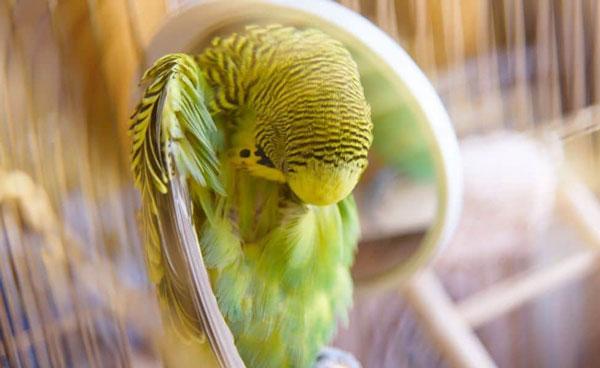
After the first molt, your budgie will typically molt once a year. However, it varies from budgie to budgie because bi-annual molt is commonly seen in budgies.
What Determines Molting in Budgie?
Molting is a natural process and can occur at any time of the year. However, seasonal, environmental, and social triggers can provoke the molting process.
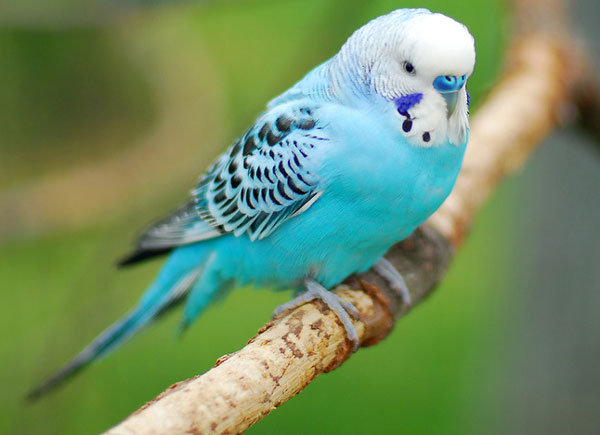
Seasons & Photoperiods
According to VCA Hospitals, seasonal change and daylight hours may stimulate molting. But it’s not as accurate for pet birds as for the wild ones. However, many budgies have been reported to molt heavily in the spring and fall. But again, it could vary and not apply to all budgies.
The main reason molting becomes unpredictable in pet budgies is their exposure to artificial lights instead of natural, seasonal lights. Their body becomes confused due to the exposure to different light cycles or photoperiods. As a result, incomplete and irregular molts occur.
Nutritional Status
Nutritional status plays an essential role in a budgie’s molting process. Your budgie may experience incomplete molting, where the feathers mightn’t grow due to the lack of nutrition. Remember, a healthy budgie on a balanced diet and getting the proper nutrients will have a smoother molting experience than the one suffering from nutrition deficiency.
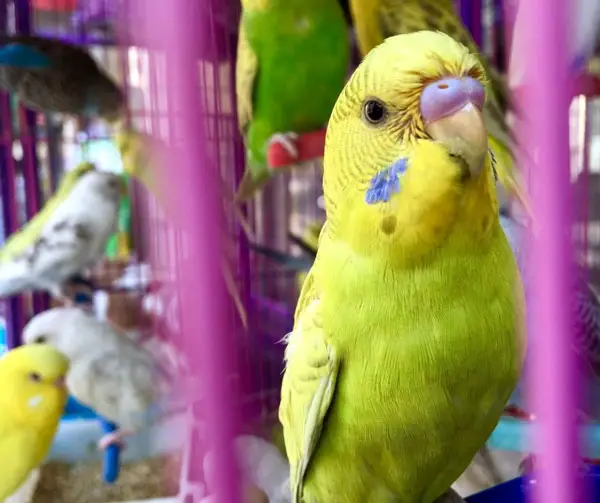
Your molting budgie requires additional protein, calcium, and vitamins for growing solid feathers. It needs proper nutrition during this period due to its increased metabolic rate, which can go up by 30 percent.
Reproductive Cycle
Budgies, like other birds, don’t molt during the breeding season. So you can expect to see molting occurring in your female after the breeding period. Molting is also triggered by hormones secreted from the pituitary or thyroid gland.
How does Molting Feel to the budgie?
Typically, the head and breast feathers are the first ones to be replaced in molting. And it usually ends with wing and tail feathers. A healthy molting process takes around two to three weeks to replace all the old feathers with the new ones. But how does a budgie feel during this period? Let’s see some of their critical behavioral changes here.
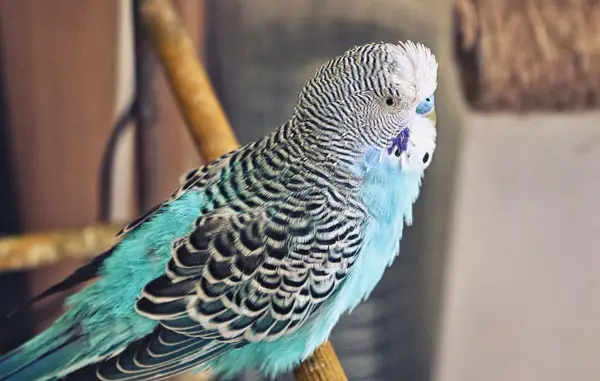
- Molting is a physically demanding process for budgies. They require more energy to survive this period. Their bones get fragile, and they become highly vulnerable to sickness.
- Budgies may also go through hormonal disruptions during molting. They may feel irritable and can be seemed to scratch themselves to dislodge the feathers quickly.
- They tend to be less active in this period and may sleep more. They’ll also vocalize less and look more tired.
- Molting can be a stressful condition for budgies, which can cause them to be upset all the time. During this time, they’ll seek extra attention from their owners.
Also read: How Often Do Budgies Poop?
Symptoms of Normal Vs. Abnormal Molting
For a normal, healthy molting, you’ll see the feathers of your budgie dropping out gradually from the head and breast first and then ending up with the wings and tail. The new ones should pop relatively quickly to replace the fallen ones. Moreover, the sign of normal molting is it shouldn’t indicate an abnormality.
How do you identify abnormal molting? The bald patches exposing bare skin are a significant sign of abnormal molting. Discolored or pin feathers are also unnatural and probably indicate an illness. An abnormal molting is also referred to as French molting, where the replacement of the dropped feather is delayed significantly.
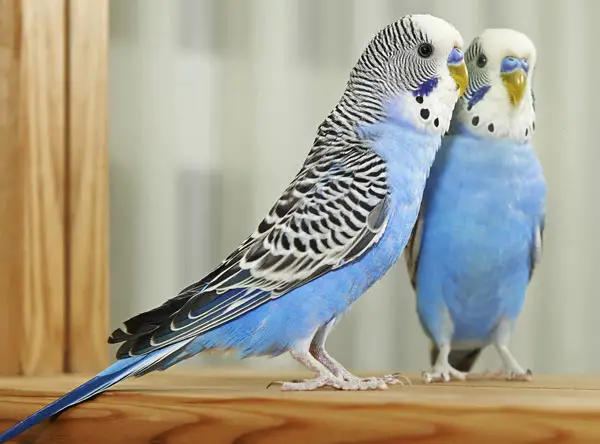
An abnormal molting can be caused by viruses, parasites, or nutritional deficiencies. Since delayed molting can compromise the immunity of your budgie, you should consult your vet if you see the molt isn’t progressing.
How Can I Take Care of My Budgie During the Molt?
Your budgie requires extra TLCs during molting. Consider the following tips to take care of your budgie during this period.
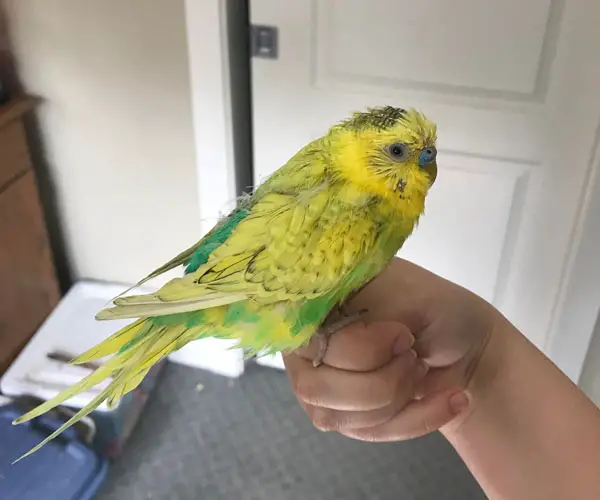
Comfortable Environment
Provide them with a calm and comfortable environment. Keep the temperature of your budgie’s room around 70 to 75 Fahrenheit. Make sure no cold breeze is coming in and the humidity is well balanced. A comfy environment can reduce the stress a molting budgie goes through. Allow them to rest as much as possible, avoiding disturbing or petting them. Also, mist them a couple of times daily.
Give Them Nutrient-rich Diet
Since your budgie has increased nutritional demand during molting, provide it with nutrient-rich food, especially ones that contain more protein, calcium, and vitamins. Consider grains, eggs, and legumes with their regular seed & veg diet as they contain keratin, which is required the most for their growing feathers.
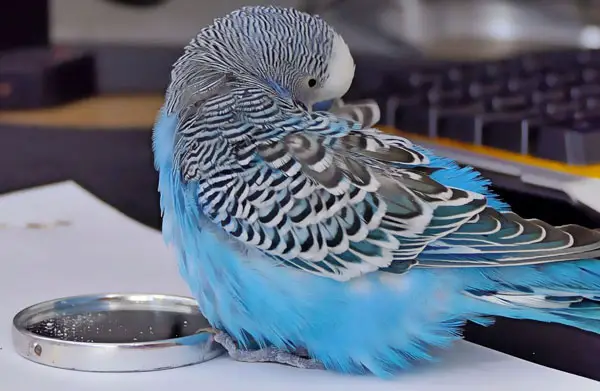
Feeding them hard-boiled eggs and cucumber can make the molting process more efficient. The Vitamin B7 supplement named biotin could be an excellent option to consider. Also, ensure enough calcium as they’re required to grow new feathers.
Provide Avian-specific Supplements
There are many avian-specific pre and probiotics available out there. They can improve the digestive ability to absorb nutrients and prevent infections. These supplements can also rebalance the natural enzymes and microbiome to improve the overall health of your budgie.
Related: Budgie Laying Eggs on Bottom of Cage
FAQs
Check out some of the FAQs answered on the topic.
The budgies typically sit for long hours during molting without doing any activity. Some may get more sleep as they have an increased energy demand during this time. They could also be seen panicking more than usual to noise or movements.
Molting isn’t comfortable for budgies. They go through severe discomfort, stress, and some pain during molting.
Final Words
Molting typically occurs annually in budgies, but many budgies go through molting more than once a year. It’s a very stressful process that heavily taxes your budgie’s bodily resources. Things mightn’t always go smoothly for budgies in captivity. Since they’re not exposed to natural sunlight and the environment, irregular, incomplete, and abnormal molting are very much possible.
So make sure your budgie’s on a nutrient-rich diet to meet the increased energy and nutrient demand during molting. It can take them two to three weeks to complete the process, so ensure they’re in a calm and comfortable environment where they can get enough rest to cope with the conditions. Consult your vet if you see any abnormality during this whole period.
